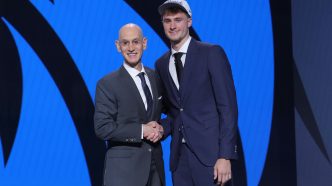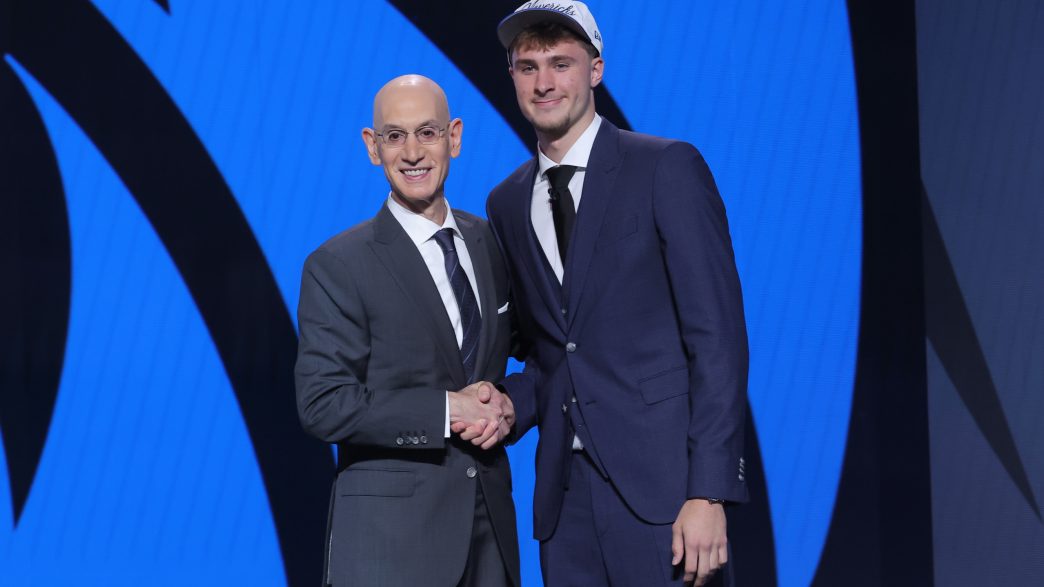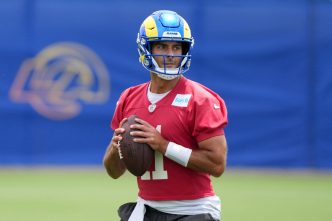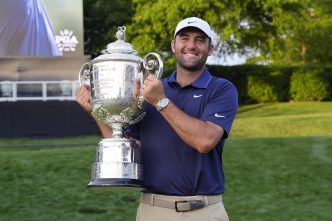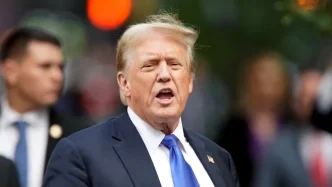As the dust settles on the 2025 NBA Draft, it’s time to unpack how each team fared in their selections, focusing on the strategic value and fit rather than the results which are often impacted by factors outside of their control. With five first-round picks to their name, the Brooklyn Nets are an intriguing case, but we’ll get to that later. What matters now is how these teams maximized their opportunities based on what we knew at the time. Let’s break down the picks that were made, incorporating insights from statistics and scouting perspectives.
Atlanta Hawks: A
Round 1: Asa Newell (No. 23)
Atlanta made a savvy move by trading down, acquiring an unprotected 2026 first-round pick in the process while still selecting Newell, a player who was projected higher in my stats-based analysis. With Kristaps Porzingis joining the lineup, Newell’s ability to blend his skill set with Porzingis’ strengths could be a game-changer for the Hawks.
Boston Celtics: C+
Round 1: Hugo Gonzalez (No. 28) Round 2: Amari Williams (No. 46), Max Shulga (No. 57)
Gonzalez seems more suitable as a stash pick for future development, yet the Celtics plan to utilize him right away. It’s curious given his college shooting struggles compared to others, like Christian Braun, who found success much earlier. Williams and Shulga bring intriguing potential, but they come with their own set of challenges that Boston will need to navigate.
Brooklyn Nets: C+
Round 1: Egor Demin (No. 8), Nolan Traore (No. 19), Drake Powell (No. 22), Ben Saraf (No. 26), Danny Wolf (No. 27)
Brooklyn’s strategy of acquiring a plethora of first-round picks sets the stage for future development. Selecting multiple players with overlapping skill sets raises questions about spacing and efficiency on the floor. Still, this could be a process that positions them well for future lottery picks.
Charlotte Hornets: B
Round 1: Kon Knueppel (No. 4), Liam McNeeley (No. 29) Round 2: Sion James (No. 33), Ryan Kalkbrenner (No. 34)
Knueppel has both potential and fit in Charlotte’s system, noted for his scoring efficiency. While they may have reached a bit for James, Kalkbrenner might find immediate playing time following the center trade, which signals a thoughtful approach to building their roster.
Chicago Bulls: A-
Round 1: Noa Essengue (No. 12) Round 2: Lachlan Olbrich (No. 55)
The Bulls have kicked off a young core with Essengue, who can mesh well with fellow forward Matas Buzelis. This pick reflects a commitment to talent over immediate results, which is a smart long-term strategy.
Cleveland Cavaliers: B
While not an early pick, the Cavaliers grabbed Proctor, who shows growth potential and sharp shooting numbers. He could also bolster their defensive lineup. Niang may carry risk in his shooting, but Cleveland takes a chance on his potential.
Dallas Mavericks: B
Round 1: Cooper Flagg (No. 1)
With the top selection, the Mavericks landed a widely anticipated choice in Flagg. The front office deserves credit for capitalizing on their lottery luck and avoiding any major missteps.
Denver Nuggets: Incomplete
It’s tough to assign a grade here due to their limited control over future picks and trading. Until they solidify their strategy, we’ll hold out hope for their upcoming opportunities.
Detroit Pistons: B
Round 2: Chaz Lanier (No. 37)
Lanier’s late bloom at Tennessee could provide a valuable scoring option and depth should the Pistons need to replace veterans heading into free agency.
Golden State Warriors: B
Round 2: Alex Toohey (No. 52), Will Richard (No. 56)
Toohey’s upside is evident, particularly defensively. Richard’s solid shooting percentages highlight his capability to fit into Golden State’s heavy ball movement style.
Houston Rockets: Incomplete
With the focus on securing Kevin Durant, their draft strategy becomes secondary. Though they might not make immediate strides, their ability to acquire an elite player cannot be overstated.
Indiana Pacers: A
Round 2: Kam Jones (No. 38), Taelon Peter (No. 54)
Jones has the potential for immediate impact, which is vital for a team missing star Tyrese Haliburton. And at No. 54, Peter presents no risk; his efficiency could offset any concerns about his athleticism.
LA Clippers: C-
Round 1: Yanic Konan Niederhauser (No. 30) Round 2: Kobe Sanders (No. 50)
Niederhauser’s selection was questionable based on his past performances. The Clippers might find themselves eager to see returns on these late picks, but they face an uphill battle.
Los Angeles Lakers: B+
Round 2: Adou Thiero (No. 36)
Thiero’s selection post-trades indicates that the Lakers have sharp eyes for talent. If he can adapt to the NBA’s game, he might add to their already deep roster.
Memphis Grizzlies: C-
Round 1: Cedric Coward (No. 11) Round 2: Javon Small (No. 48), Jahmai Mashack (No. 59)
Memphis continues its trend of moving up in the draft, but the value gained through their trade is questionable here. Coward is an interesting pick, yet the risk taken to get him might not align with projected outcomes.
Miami Heat: A-
Round 1: Kasparas Jakucionis (No. 20)
Choosing Jakucionis is a show of faith in his upside despite some inconsistencies. Miami’s knack for developing players could help him excel in their system.
Milwaukee Bucks: B
Round 2: Bogoljub Markovic (No. 47)
Markovic is a project yet offers solid shooting efficiency, while his defensive shortcomings may not be as glaring playing alongside Milwaukee’s talented roster.
Minnesota Timberwolves: B-
Round 1: Joan Beringer (No. 17) Round 2: Rocco Zikarsky (No. 45)
Targeting Beringer points to a vision for the future in Minnesota, looking beyond immediate results. They’re poised for a slow build, with time to nurture the talent they’ve selected.
New Orleans Pelicans: F
Round 1: Jeremiah Fears (No. 7), Derik Queen (No. 13) Round 2: Micah Peavy (No. 40)
Pelicans’ gamble on moving up may become costly. Trading their own future picks for prospects viewed as lesser could haunt them, especially if Queen fails to hit the heights expected.
New York Knicks: C+
Round 2: Mohamed Diawara (No. 51)
Diawara’s lack of impact in France raises eyebrows. While stashing him overseas could pay off, there’s a risk in his ability to grow into a contributing player.
Oklahoma City Thunder: B
Round 1: Thomas Sorber (No. 15) Round 2: Brooks Barnhizer (No. 44)
Sorber stands out for his defensive chops, potentially positioning him for significant minutes. Meanwhile, Barnhizer’s addition brings another layer of promise at a low-cost pick.
Orlando Magic: B+
Round 1: Jase Richardson (No. 25) Round 2: Noah Penda (No. 32)
The Magic acquired a potential gem in Richardson, and the investment in Penda gives them time to develop his shooting skills.
Philadelphia 76ers: B+
Round 1: VJ Edgecombe (No. 3) Round 2: Johni Broome (No. 35)
With solid choices this draft, the Sixers position themselves to compete now while grooming future talent in Broome, who offers versatility in the paint.
Phoenix Suns: B
Round 1: Khaman Maluach (No. 10) Round 2: Rasheer Fleming (No. 31), Koby Brea (No. 41)
Phoenix sticks closely to their needs by getting Maluach first. Further, Fleming brings depth and shot-blocking potential that could bolster their lineup even more.
Portland Trail Blazers: C-
Round 1: Yang Hansen (No. 16)
While the potential remains for Hansen, the Blazers will need to show that their faith in his ability to outperform projections can pay dividends in the long run.
Sacramento Kings: C
Round 1: Nique Clifford (No. 24) Round 2: Maxime Raynaud (No. 42)
The Kings’ choices here are a roll of the dice, with Clifford needing time to show why he should be viewed as a serious prospect. Raynaud could also develop, but both selections require patience.
San Antonio Spurs: A
Round 1: Dylan Harper (No. 2), Carter Bryant (No. 14)
The Spurs’ selections indicate a bright future, especially with the potential for Bryant to be a perfect complement to their already dynamic roster.
Toronto Raptors: B
The Raptors captured a unique fit in Murray-Boyles, who, if given the right development, could emerge as a force. Toronto will have to work on getting the right pieces around him.
Utah Jazz: B+
Round 1: Ace Bailey (No. 5), Walter Clayton Jr. (No. 18) Round 2: John Tonje (No. 53)
With high expectations for Bailey, the Jazz nailed two picks at the center of rebuilding. Clayton could also offer significant contributions as the Jazz round out their roster.
Washington Wizards: B-
Round 1: Tre Johnson (No. 6), Will Riley (No. 21) Round 2: Jamir Watkins (No. 43)
The Wizards continue stacking youth with these picks, adding potential as they reshape their roster. Concerns remain, particularly with the defensive metrics of Johnson, but the upsides are clear.
In conclusion, the 2025 NBA Draft presented a blend of risk and reward across the board. Each team approached it with unique strategies. As the season unfolds, it will be fascinating to track how these picks evolve and shape the future of their respective franchises.

